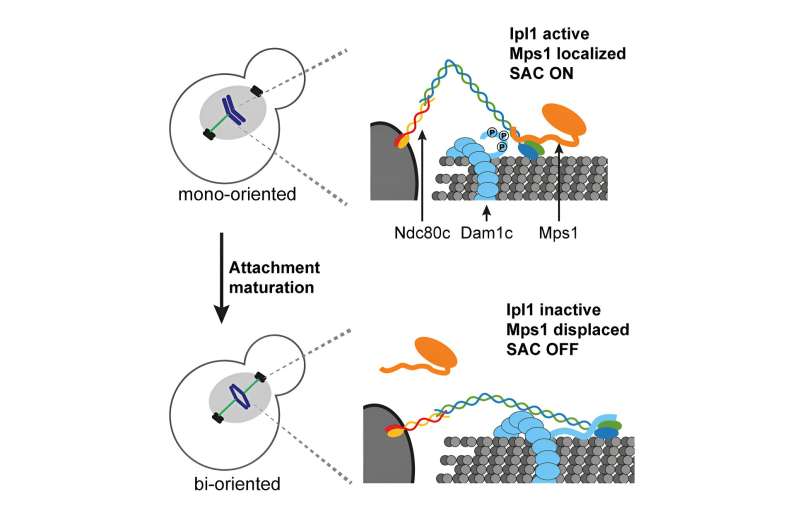Molecular stop signal identified: The surveillance system of cell division
Originally published by Birte Vierjahn, University of Duisburg-Essen, on June 4, 2024
Credit: Current Biology (2024). DOI: 10.1016/j.cub.2024.03.062
Several million cells divide every second in our bodies. During nuclear division (mitosis), the genetic material must be distributed correctly and completely between the daughter cells—errors in this process can lead to defective developments or genetic disorders, and many cancer cells are also characterized by unequal numbers of chromosomes.
Therefore, if errors in the division process become apparent, the cell can stop it. Biologists at the University of Duisburg-Essen have been able to elucidate this process at a molecular level. Their findings are published in Current Biology.
During cell division, mitotic spindles are formed—tiny fibers that originate at opposite poles of the cell and bind to the chromosomes to pull one representative of each sister chromatid into one of the two resulting cells. A sophisticated monitoring system is in place to prevent errors during cell division. This system sends a "Stop! Dont divide yet!" signal to the cell as long as not all chromosomes have correctly connected to the mitotic spindle.
Researchers from the University of Duisburg-Essen (UDE) and colleagues from the Max Planck Institute of Molecular Physiology in Dortmund, have now been able to gain new insights into the molecular mechanism of this surveillance system.
They discovered how the initiator of the stop signal, a protein kinase called Mps1, is bound to the attachment site of the chromosomes and how it is only dislodged once the chromosomes are correctly bound to the mitotic spindle.



Comments
Post a Comment